How to assess whether ABA therapy is working for your child
February 23, 2025
Effective Ways to Evaluate ABA Therapy Progress for Your Child

Introduction
Applied Behavior Analysis (ABA) therapy is a highly regarded, evidence-based intervention for children with autism spectrum disorder (ASD). The therapeutic approach primarily focuses on enhancing communication, social, and adaptive skills through structured and individualized plans. As a parent, understanding how to assess if ABA therapy is working for your child is crucial to ensure that they benefit thoroughly from the intervention. This guide offers insights on evaluating the effectiveness of ABA therapy, recognizing key indicators of success, and understanding the importance of parental involvement.
Understanding the Evidence Behind ABA Therapy
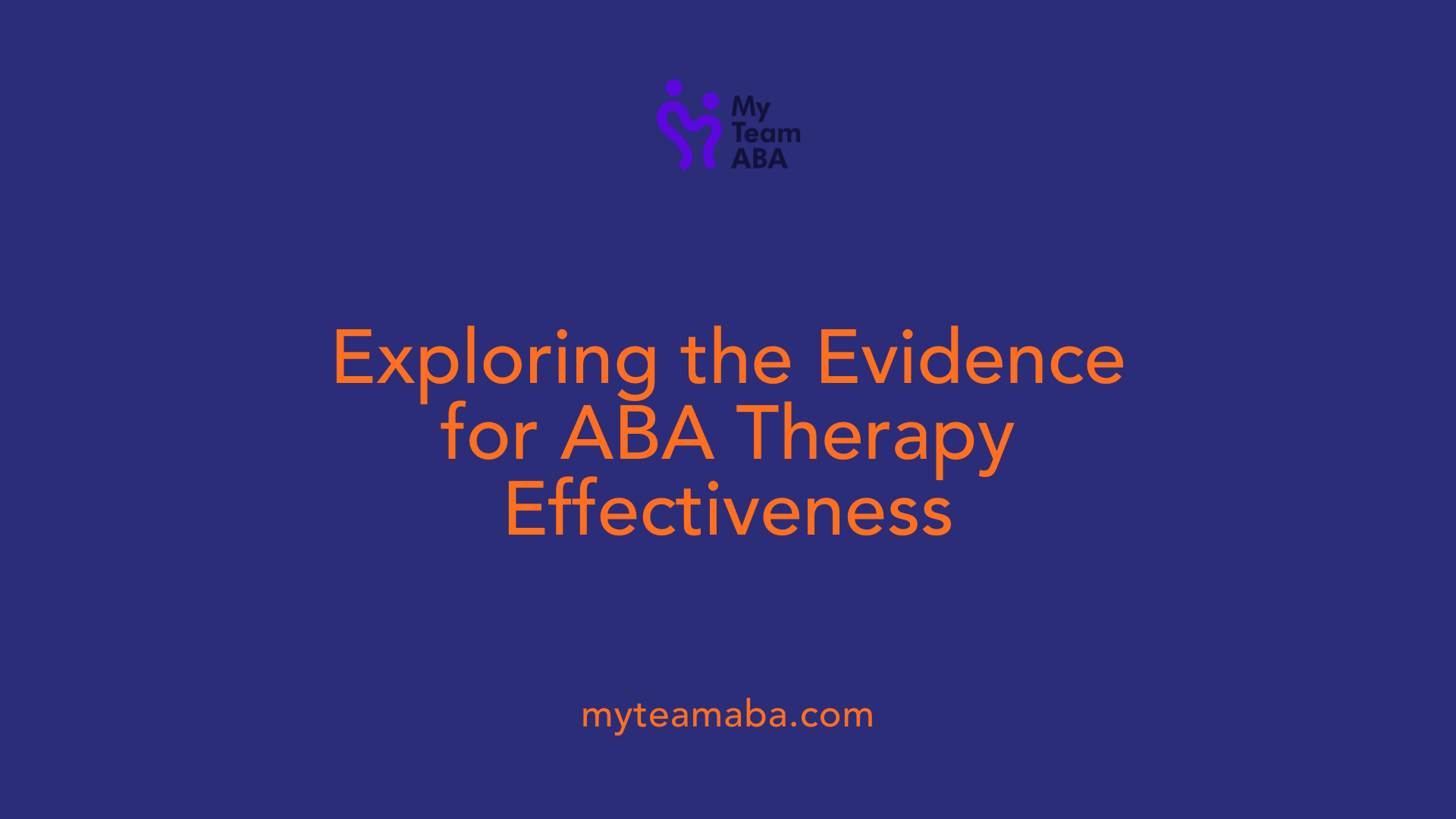
What is the evidence for the effectiveness of ABA as a treatment for autism?
There is substantial evidence supporting the effectiveness of Applied Behavior Analysis (ABA) as a treatment for children with autism spectrum disorder (ASD). Meta-analyses indicate that early and intensive ABA therapy can lead to small to moderate improvements in adaptive behavior, specifically in areas such as communication and social interaction.
Research shows that younger children tend to experience greater developmental progress when enrolled in ABA programs. For instance, a recent study highlighted that only 28% of children received the recommended intensity of treatment, yet significant improvements were recorded in adaptive skills among those with lower functioning levels. This underscores the potential benefits of initiating therapy early and maintaining a consistent approach.
Outcomes achieved through early and intensive interventions
Early intervention, particularly through ABA therapy, is proven to foster development in various skill areas. Children involved in structured, high-intensity ABA programs often demonstrate enhanced communication abilities, improved social skills, and better adaptability to daily routines. The continuity of service is crucial, as consistent application of therapy principles translates into more effective learning and retention of skills.
Role of service continuity and parental advocacy
In addition to early intervention, the role of parental involvement and advocacy is paramount. Parents who actively engage with therapists, monitor progress, and reinforce learned behaviors at home create a supportive environment that heightens the effectiveness of ABA. Regular communication with professionals ensures that any necessary adjustments to the treatment plan are made swiftly, emphasizing the need for a tailored approach particular to each child’s unique needs. By fostering a collaborative atmosphere, parents can significantly contribute to their child’s progress in ABA therapy.
The Role of Parent Involvement in ABA Success
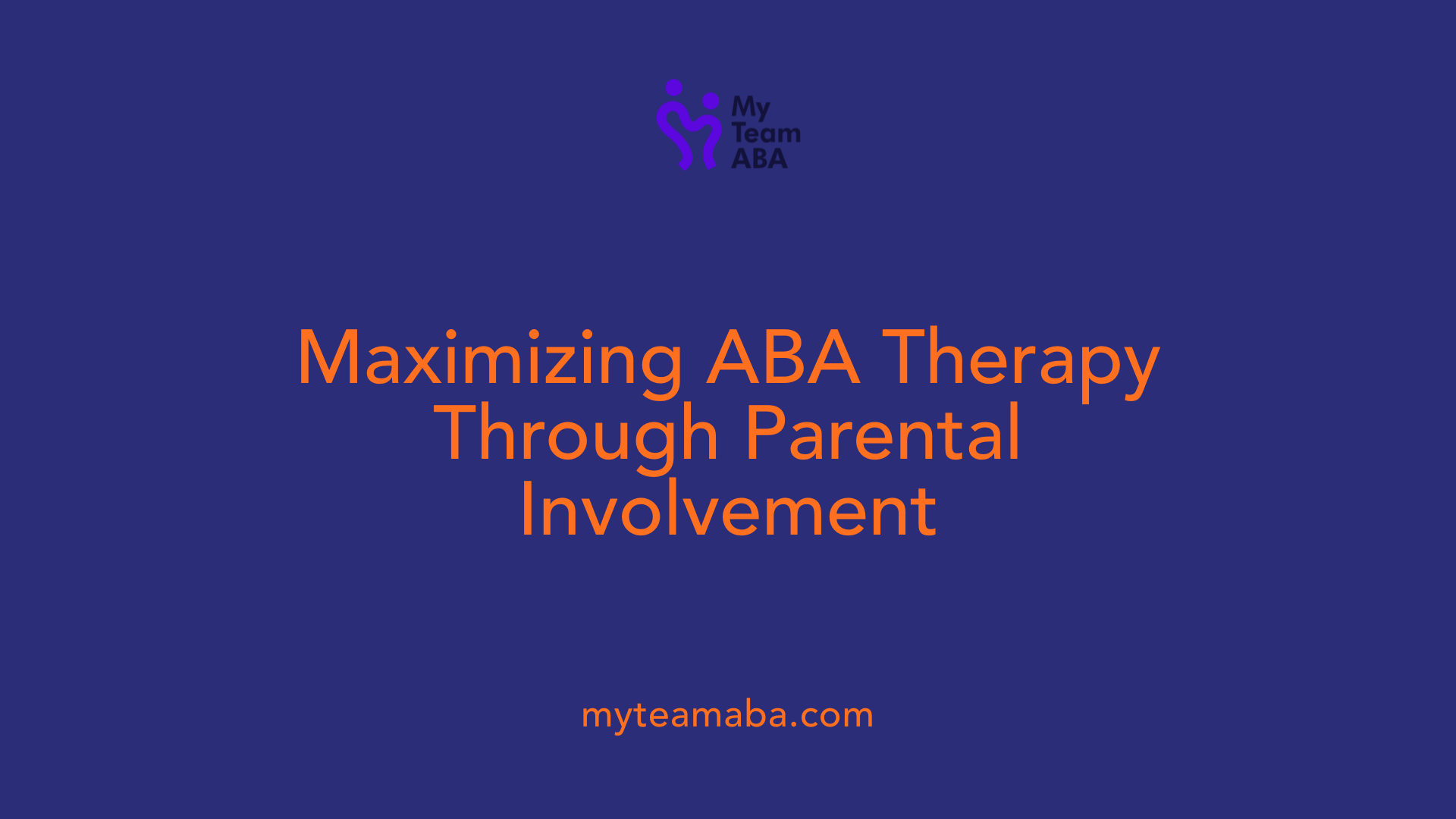
Importance of Consistency and Application of Behavioral Strategies
Parent involvement is crucial for maximizing the effectiveness of ABA therapy. When parents actively engage in the process, they ensure that behavioral strategies are consistently applied both at home and during therapy sessions. This consistency helps children internalize skills and behavioral expectations, facilitating a smoother transition of learned behaviors into everyday life.
Training and Collaboration Between Parents and Therapists
Collaboration between parents and therapists is fundamentally important. By participating in training sessions, parents learn specific techniques to reinforce positive behaviors at home. This empowerment boosts their confidence in managing their child's behavioral needs. Furthermore, regular communication with therapists allows families to track their child’s development and adjust strategies as necessary. {
| Training Benefits | Details |
|---|---|
| Skill Reinforcement | Parents implement strategies learned in therapy directly at home. |
| Progress Tracking | Parents provide insights into behavioral changes noted in daily routines. |
| Tailored Intervention Plans | Collaboration leads to interventions adapted to the family's context. |
}
Generalization of Skills Learned in Therapy to Home Environments
The ultimate goal of ABA therapy is to enable children to generalize skills learned in therapy to various settings, including home and school. When parents apply consistent reinforcement strategies, it promotes an environment where children feel supported. This encouragement aids in the generalization process, making it easier for children to effectively use their skills in real-world situations.
In summary, active participation, training in strategies, and consistency between therapy and home settings greatly enhance the outcomes of ABA therapy, benefiting both the child and the family.
Key Indicators That a Child Might Need ABA Therapy
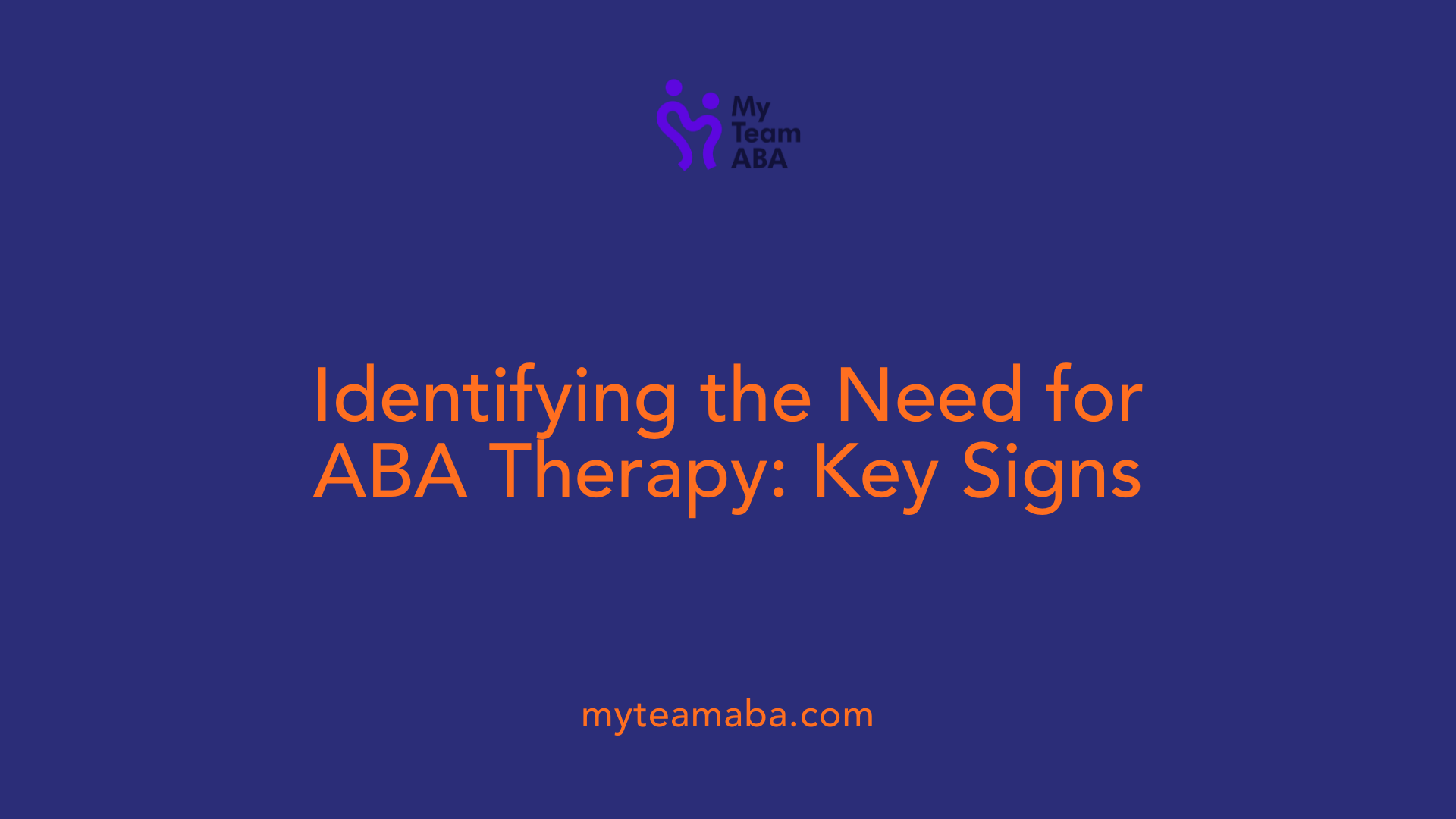
What signs suggest that a child might need ABA therapy?
There are several signs that may indicate a child could benefit from ABA therapy. Common behaviors include difficulties in communication and social interactions. For example, delays in speech and lack of eye contact can be significant red flags.
Children may also experience challenges with independent living skills and social situations, such as in preschool or daycare settings. These difficulties often manifest in problematic behaviors, suggesting a need for targeted intervention.
Furthermore, if a child struggles to adapt to changes in routine or transitions, this may also indicate a need for assistance. Additional signs to look for are difficulties in identifying and expressing emotions, as well as engaging in repetitive behaviors or developing intense interests.
Early behavioral indicators of autism
Identifying early behavioral indicators of autism is crucial for timely intervention. Delayed speech, challenges with social interactions, and issues with daily routines are primary indicators.
Observing how a child relates to peers and adults, or their responses to social cues, can provide insights into their developmental progress.
Potential benefits of early intervention with ABA
Engaging in early ABA therapy can lead to significant improvements in communication, social skills, and daily living tasks. The therapy focuses on reinforcing positive behaviors while addressing challenges, leading to enhanced overall developmental outcomes for children with autism.
Using evidence-based practices, ABA helps to tailor interventions to the unique needs of each child, paving the way for improved skills and greater independence over time.
Interpreting Behavioral Changes During ABA Therapy
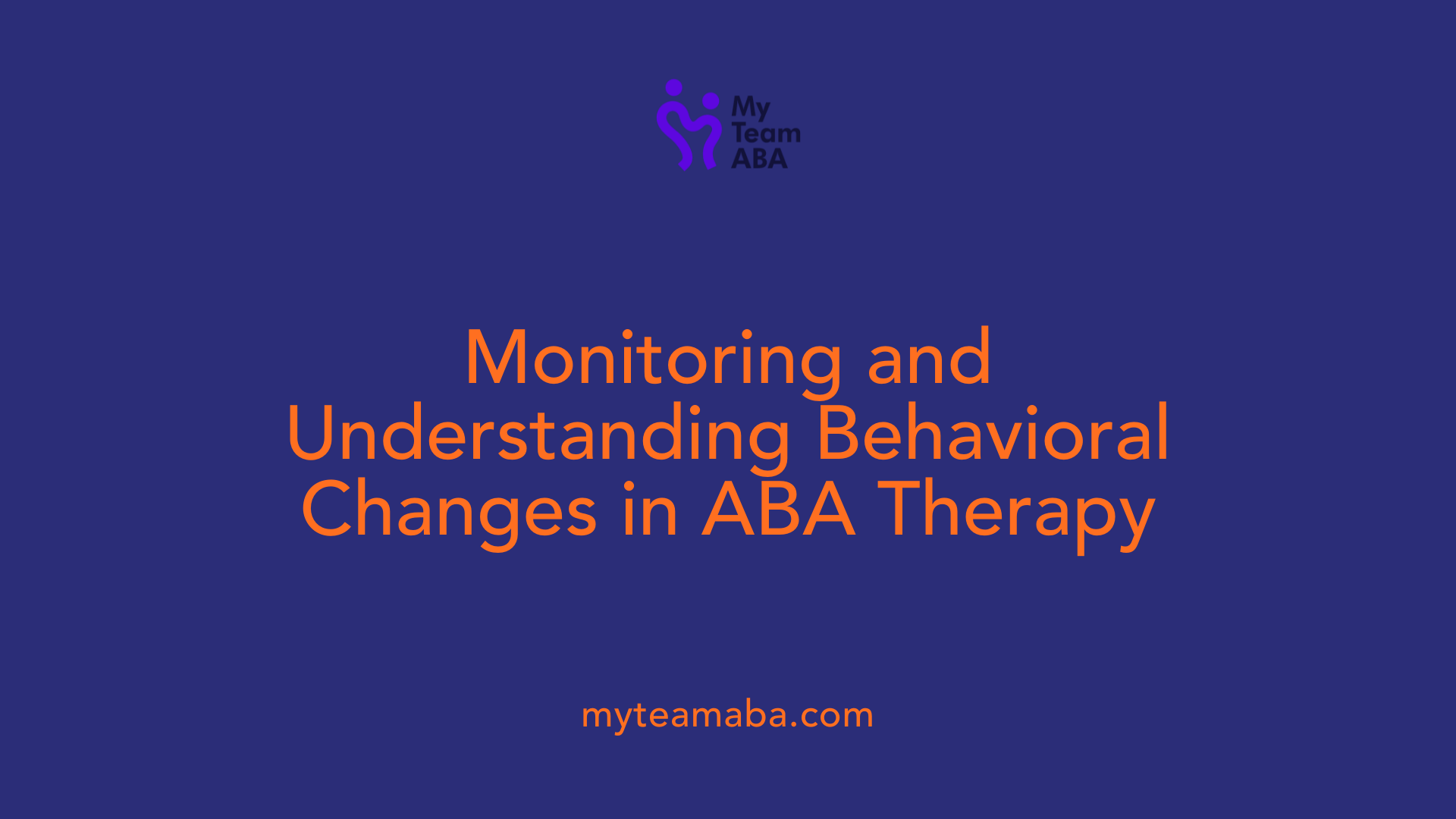
Monitoring and Assessing Behavioral Changes
To effectively interpret behavioral changes during ABA therapy, ongoing observation is key. Parents and therapists should focus on specific, measurable goals established in the treatment plan. Tracking these goals allows for clearer insights into the child’s progression in areas such as communication, social skills, and adaptive behaviors.
A systematic approach includes regular data collection during therapy sessions. For example:
- Frequency Monitoring: Counting how often targeted behaviors occur.
- Duration Monitoring: Measuring the length of time specific behaviors are exhibited. These methods, combined with frameworks like the ABC model (Antecedent-Behavior-Consequence), help in understanding the triggers and results of behaviors, guiding necessary therapeutic modifications.
How to Measure Progress Towards Goals
Progress can be assessed by evaluating whether the child is meeting the specific goals outlined in their ABA treatment plan. Examples of evidence for success include:
- Observable Improvements: Increased communication skills, such as using more words or improved social interactions with peers.
- Generalization: The ability to apply learned skills in different settings, proving the therapy’s effectiveness in varied environments.
Furthermore, parental feedback and regular updates from behavior analysts provide valuable insight into daily improvements, reinforcing the importance of collaborative efforts.
Effectiveness of Different Treatment Strategies
The success of specific treatment strategies in ABA therapy can be gauged through continuous data assessment. Increased participation and enthusiasm from the child can signal that the current strategies are resonating well. Setting clear, achievable goals tailored to the child's needs empowers both therapists and parents to adjust methods as needed.
Therapists monitor behavioral changes closely, applying evidence-based practices and refining interventions based on collected data. This adaptability is crucial for fostering sustained progress and enhancing skill acquisition, ensuring the therapy remains effective and relevant to the child’s growth.
Common Assessments Used in ABA Therapy
What are some common assessments used in ABA therapy?
Various standardized assessments are used to evaluate progress in ABA therapy, such as:
| Assessment Tool | Focus Area | Description |
|---|---|---|
| Early Start Denver Model (ESDM) | Early development | Focuses on skills in early childhood, including language, social, and adaptive behaviors. |
| Assessment of Basic Language and Learning Skills – Revised (ABLSS-R) | Language and learning skills | Evaluates foundational language and academic skills, targeting essential learning areas. |
| Promoting Emergence of Advanced Knowledge (PEAK) | Learning and behavioral skills | A comprehensive assessment examining functional skill knowledge and application. |
| Assessment of Functional Living Skills (AFLS) | Daily living skills | Measures independent living skills necessary for daily functionality, like grooming and safety. |
| Verbal Behavior Milestones Assessment Placement Program (VB-MAPP) | Communication skills | Assesses a child’s verbal and communication abilities through structured milestones. |
| Essential for Living (EFL) | Functional skills and independence | Comprehensive evaluation for communication and adaptive living, emphasizing functional skills for life. |
Role of assessments in personalizing therapy
Assessments in ABA therapy play a vital role in tailoring interventions to meet the unique needs of each child. By understanding individual strengths and challenges, therapists can develop customized programs that target specific skill deficits and foster growth.
Continuity of progress measurement
Regular progress measurement is crucial in ABA therapy. By continuously collecting data and evaluating behavior changes, therapists can make informed decisions to modify intervention strategies or focus areas, ensuring that the therapy evolves alongside the child's development.
When to Consider Concluding ABA Therapy
Indicators that Goals Have Been Met
Determining the right moment to conclude ABA therapy hinges on clear indicators that the individual has made significant strides toward their treatment goals. Key outcomes to watch for include:
- Improvement in Communication Skills: Noticeable increases in the child’s ability to articulate needs, both verbally and non-verbally.
- Behavioral Regulation: A reduction in previously problematic behaviors, such as tantrums or self-injurious actions, signifies positive adjustments.
- Enhanced Social Skills: Better interactions with peers and the ability to engage in age-appropriate social behaviors are strong indicators of progress.
- Achievement of Treatment Goals: Regular evaluations against specific, measurable goals set by the BCBA demonstrate the effectiveness of the therapy.
Role of Family and Therapists in Assessing Readiness
Family and therapists play an integral role in assessing the readiness to conclude ABA therapy. Open communication between parents and Board Certified Behavior Analysts (BCBAs) is essential for a comprehensive evaluation of the child’s progress. Regular updates allow families to:
- Share observations of everyday behaviors and interactions.
- Provide feedback on how the child applies skills learned in therapy to real-life situations.
- Discuss any remaining challenges or new goals that may arise as the child develops. This collaboration ensures therapy aligns closely with the child’s evolving needs.
Duration of Typical Therapy Courses for Children
The duration of ABA therapy varies significantly between children, typically lasting anywhere from 3 to 5 years. Frequency of sessions can range from 2 to 5 times a week, depending on individual goals and needs. Regular assessments conducted by a BCBA guide adjustments to the treatment plan throughout this period, focusing on sustaining progress while ensuring the therapy remains tailored and effective.
Understanding when to conclude ABA therapy is critical for parents, emphasizing the importance of clear indicators, active family involvement, and regular therapist assessments.
Observable Behavioral Changes Indicating Progress
Signs of Improvements in Communication and Social Skills
One of the most telling signs that ABA therapy is effective is the enhancement of communication abilities. This may manifest as an increase in verbal expressions, such as using more words to convey needs or wants. Additionally, children can show improved receptive language skills, responding more appropriately to questions or instructions. Social interactions also improve, as children may initiate play with peers or engage in conversations more frequently, indicating their growing social confidence.
Importance of Daily Routine Skill Development
ABA therapy also emphasizes the development of adaptive skills through consistent practice in daily routines. This includes tasks like grooming, dressing, or even following a schedule. As a child becomes more independent in these areas, it reflects the effectiveness of the tailored interventions implemented in therapy. Parents may notice that their child can manage daily activities with less support, showing that skills are being successfully generalized beyond the therapy setting.
Role of Adaptive Skill Enhancement in Therapy Outcomes
Adaptive skills are vital for everyday functioning and self-sufficiency. ABA therapy focuses on teaching alternative, more appropriate behaviors to replace problematic actions. Parents and caregivers play a crucial role in reinforcing these skills, which leads to lasting changes in behavior. As adaptive skills improve, families often notice a positive shift in the child’s overall demeanor and ability to handle various situations autonomously, marking significant progress in their therapy journey.
The Importance of Data-Driven Progress Tracking
Systematic data collection in ABA
Data-driven progress tracking is essential in Applied Behavior Analysis (ABA) therapy. Therapists gather quantitative data on specific target behaviors during sessions, which can include the frequency, duration, and context of these behaviors. This systematic approach allows for a clear understanding of a child's performance over time.
Interpretation of data for measuring effectiveness
Interpreting the data collected provides insights into how effective the therapy is. Caregivers and therapists can analyze trends to see improvements or persistent challenges. Outcomes such as increased communication abilities, enhanced social interactions, and better adaptive skills serve as indicators that therapy is beneficial.
Adaptation of interventions based on data insights
One of the advantages of data-driven practices is the ability to adjust interventions based on the evidence collected. If certain strategies are not yielding the desired results, practitioners can modify or shift plans to better meet the unique needs of the child. This ensures that ABA therapy remains dynamic and responsive to changing circumstances.
Here’s a summary of data-tracking aspects in ABA therapy:
| Aspect | Description | Importance |
|---|---|---|
| Data Collection | Gathering numerical evidence of behaviors targeted in therapy sessions. | Provides a factual basis for progress analysis. |
| Progress Monitoring | Continuous observation to track advancements toward specific goals. | Helps maintain focus on defined developmental objectives. |
| Intervention Adaptation | Modifying treatment plans based on data insights to enhance outcomes. | Ensures therapy remains relevant and effective. |
Individualized Approach and Tailored Interventions in ABA
Significance of Personalized Treatment Plans
Applied Behavior Analysis (ABA) therapy emphasizes the importance of individualized treatment plans. Each child diagnosed with autism or other behavioral challenges has a unique set of skills, needs, and circumstances. Thus, effective ABA programs are specifically tailored to address an individual child's communication, social, and adaptive skill deficits. Are therapy goals set based on what the child and the family identify as priorities? Yes, the personalization ensures that each intervention truly resonates with the child’s daily experiences and aspirations.
Adapting to Each Child's Unique Needs
Therapists utilize comprehensive assessments, including functional behavior assessments (FBAs), to determine the root causes of problematic behaviors and shape intervention strategies. This individualized focus allows therapists to adapt methods that work specifically for the child's preference and learning style, enhancing engagement and outcomes.
Role of Qualified Professionals in Designing Interventions
Board-certified behavior analysts (BCBAs) play a crucial role in ABA therapy. They possess extensive training and expertise in customizing interventions that align with evidence-based practices. Through continuous data collection and evaluation during therapy sessions, BCBAs can adjust treatment plans to ensure they remain effective over time. Regular collaboration between therapists, families, and educators is needed for ongoing success.
Positive Reinforcement and Its Role in ABA Therapy
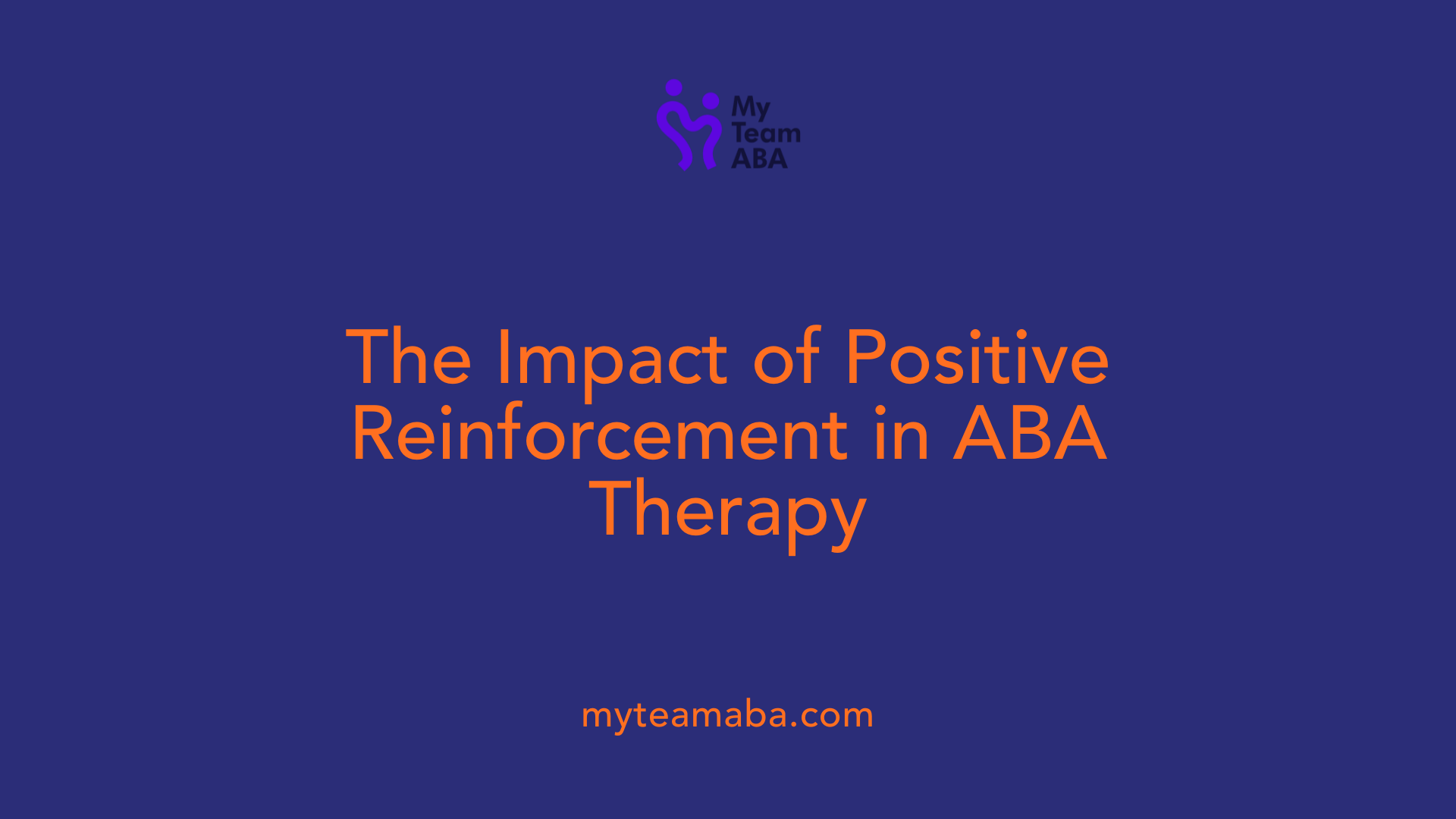
Use of positive reinforcement in skill acquisition
Positive reinforcement is a central tenet of Applied Behavior Analysis (ABA) therapy, where desired behaviors are encouraged through rewards. This approach helps to reinforce new skills, making it easier for children to learn essential communication, social, and adaptive skills. By rewarding positive actions, therapists can motivate children to engage more fully in the learning process.
Contrast with punishment-based approaches
Unlike punishment-based methods that focus on reducing problematic behaviors, positive reinforcement emphasizes skill-building without inducing fear or anxiety. Such punitive measures can lead to detrimental effects on emotional well-being and may make learning feel less enjoyable. Positive reinforcement, on the other hand, fosters a supportive environment where children feel safe and encouraged to explore new behaviors.
Impact on learning and therapy enjoyment
Incorporating positive reinforcement into ABA therapy not only enhances the learning experience but also boosts the child’s self-esteem. When children receive praise or tangible rewards for their accomplishments, they are more likely to remain engaged and enthusiastic about participating. This enthusiastic engagement can lead to more effective therapy and greater success in achieving the defined goals. Overall, positive reinforcement transforms the learning atmosphere into a constructive and enjoyable setting that promotes ongoing growth.
Collaboration Between Therapists, Educators, and Families
How do collaborative efforts enhance ABA outcomes?
Collaboration between therapists, educators, and families is crucial in maximizing the effectiveness of ABA therapy. When parents and educators work together with therapists, they create a consistent approach to teaching new skills and reinforcing positive behaviors across different settings. This alignment enhances the learning experience and supports skill generalization, which is vital for lasting behavioral change.
What kind of training do parents and teachers receive?
Training for parents and teachers is a fundamental aspect of ABA therapy. Therapists provide tailored guidance on how to implement strategies in everyday situations, helping parents reinforce what children learn during therapy. Workshops and individual coaching sessions equip caregivers with the skills to identify, reward, and promote positive behavior, ensuring that lessons extend beyond therapy sessions.
How does feedback from professionals influence therapy adjustments?
Feedback from therapists and educators plays an essential role in refining the therapy process. Regular communication allows for ongoing assessment of the child’s progress toward specific treatment goals. By sharing observations and insights, professionals can identify effective strategies and necessary adjustments, enhancing overall therapy effectiveness. This engagement ensures that the therapy plan remains dynamic and responsive to the child's evolving needs.
Conclusion
Evaluating the effectiveness of ABA therapy for your child requires a multidimensional approach. By understanding the evidence behind ABA, interpreting observable changes, and employing systematic assessments, parents can gain a clearer perspective on their child's progress. Moreover, active involvement and collaboration with therapists are crucial to ensuring that the therapy’s objectives align with the child's developmental needs. As families navigate the journey of ABA therapy, it is essential to maintain open communication, regularly assess goals, and continuously refine strategies, ensuring that each child's unique journey is complemented by supportive and evidence-guided interventions.
References
- How to Tell If ABA Therapy Treatment Is Working
- How to Know If You're Getting Good ABA - Child Mind Institute
- How to tell if autism therapy treatment is working
- How to Tell if Aba Therapy Treatment is Working
- How Do I Know if ABA Therapy is Working?
- Determining if ABA Therapy is Right for your Child
- Applied Behavior Analysis (ABA) | Autism Speaks
- How Long Does ABA Therapy Last? | ABA for Autism
